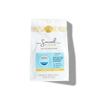
Hendrix
From £11
Free shipping on orders over £35
Free shipping on 3+ bags with subscription
Save up to 10% on every order by subscribing today
Free shipping on orders over £35
0 items
You're £35 away from free shipping!
9 products

Get half off your first order when you start a subscription.
Use Code: SOCIALSUB